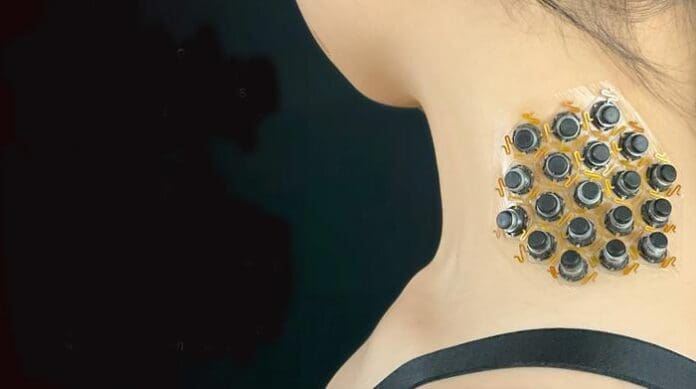This post is also available in:
 עברית (Hebrew)
עברית (Hebrew)
Researchers at Northwestern University have developed a groundbreaking wearable device capable of stimulating the skin to deliver a wide range of tactile sensations, such as pressure, vibration or twisting, in order to offer a more immersive sensory experiences for applications in virtual reality (VR) and beyond.
According to Interesting Engineering, this thin, flexible device works by using a hexagonal array of 19 tiny magnetic actuators embedded within a flexible silicone mesh. These actuators are capable of producing diverse tactile sensations, which are transmitted via Bluetooth from a connected smartphone. Once paired, the device can receive data about the user’s surroundings, such as changes in terrain or the presence of obstacles, and translate this information into specific tactile feedback. This makes it especially useful for VR environments, where a heightened sense of realism is crucial.
In addition to its gaming and VR applications, the technology holds significant potential in healthcare. For visually impaired individuals, the device could provide tactile feedback to help navigate within their environment, offering a more sophisticated alternative to more traditional tools. Similarly, for amputees using prosthetic limbs, the device could provide sensory feedback, improving their ability to feel and interact with their surroundings.
What makes this technology particularly innovative is its energy efficiency. Thanks to its “bistable” design, the device consumes very little power, only using energy during specific transitions as the actuators move. This allows the device to operate longer without frequent charging, a significant advantage in wearable technology.
The device has already shown promise in user testing. In one experiment, blindfolded participants used the device to navigate an obstacle course. With minimal training, users were able to avoid collisions and adjust their movements based on the tactile feedback they received.
This novel wearable represents a step forward in VR innovation, with the potential to dramatically improve the quality of life for users across various sectors.


























